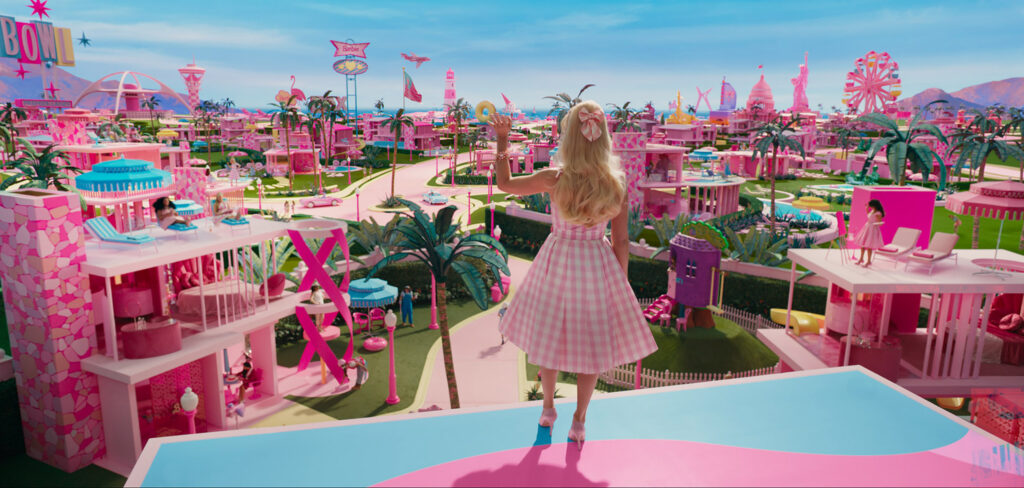What Barbie Teaches Us About Female Psychology

“Hi Barbie!” has practically become the catchphrase of the year, thanks to the massive blockbuster film that inspired it. The highest grossing movie of 2023, Barbie broke records for its billion dollar ticket sales — yup, billion with a B — making it one of the top-grossing female-led and female-directed movies of all time. And it’s not just about the numbers; it’s about the insane hype, too!
From all the all-pink premiere outfits, to the back-to-back Barbenheimer double feature, to the viral TikTok trends and brand deals, there’s no denying that Barbie’s taken the world by storm. But to understand why the movie’s become such a cultural phenomena, we need to go back to the doll that inspired it, and everything the brand stands for. With that said, here’s what Barbie teaches us about girlhood and female psychology.
You Can Be Anything!
Barbie shines as a beacon of female empowerment because she came along during a time when women were only ever expected to be mothers and wives, and thus, only ever played with baby dolls. But Barbie changed everything. She had her own money during a time when women weren’t allowed to have credit cards and smashed through the glass ceiling, making her mark even in fields once dominated by men — all while wearing heels and loving pink!
And though Ken’s been around for almost as long as Barbie, he’s always been her boyfriend and never her husband because the fact that Barbie has never had a child and never been married remains one of the most radical things about her. This was very much a deliberate choice as the executives at Mattel spoke about how they wanted girls to know that Barbie’s money is hers and hers alone, just like her house, her car, her career, her identity, and her life.
All These Women Are Barbie
Barbie also emphasizes the importance of female friendships and support networks, aligning with psychological theories that highlight the significance of social connections in women’s lives. Barbie’s interactions with her friends reflect the power of shared experiences, mutual understanding, and collaborative empowerment. The film challenges the competitive narratives that sometimes arise among women and emphasizes the potential for solidarity and collective growth.
She’s Everything, He’s Just Ken
Another interesting point worth discussing is the role Ken plays in the film. It would’ve been all too easy (and shallow) to make him the antagonist as a way to villainize men and empower women. Yet, the movie chooses a different path, painting Ken as a reflection of those oppressed by a society that neither values nor understands them, and how it’s impacted their perceptions of self-worth and identity.
While the feminist message of the Barbie movie is undeniably centered on empowering women, its impact extends to benefit men as well. By challenging traditional gender norms and portraying male characters like Ken in nuanced ways, the film breaks free from the confines of stereotypical masculinity. In doing so, it offers a more inclusive representation of men, recognizing the emotional depth and vulnerabilities that are often overlooked in media. This portrayal encourages a shift in societal perceptions, allowing men to break free from the pressures of conforming to rigid expectations, just as women are encouraged to do so.
Life After the Dreamhouse
The film’s conclusion, however, proves to be the arguably most thought-provoking moment, when Barbie decides to relinquish her perfect but never changing existence in Barbieland and become human. Her line, “I want to do the imagining, not be the idea” is a distinct departure from the narrative that women need to be perfect and extraordinary to be worthwhile. The moment lingers, a testament to the film’s power to reflect and inspire, urging women to embrace their authentic selves and rewrite their narratives beyond the boundaries of the unrealistic expectations society places on women.
Since her inception in 1959, Barbie has transcended the confines of being a mere toy to become a cultural touchstone representing ideals of beauty, ambition, and femininity. But more than that, both the doll and the movie mirror the multi-dimensional nature of women’s experiences. As audiences engage with Barbie’s journey, they are invited to reflect on their own paths, challenges, and aspirations, fostering a deeper understanding of the complexities of girlhood, identity, and the ongoing pursuit of empowerment in the modern world.




Responses